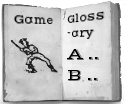Philadelphia Town Ball: Difference between revisions
Jump to navigation
Jump to search
(Glossary import) |
No edit summary |
||
| Line 2: | Line 2: | ||
|Term=Philadelphia Town Ball | |Term=Philadelphia Town Ball | ||
|Game Family=Baseball | |Game Family=Baseball | ||
|Description=The game that arose in Philadelphia in the | |Description=<p>The game that arose in Philadelphia in the 1830’s. The rules of this game have recently been induced from game accounts by Richard Hershberger. The game is distinct from the Massachusetts Game. It’s signature features were 11-player teams, an absence of set defensive positions, stakes [as bases] set in a circle 30-feet in diameter, non-aggressive pitching, a lighter, softer ball, an all-out-side-out rule, and a bound rule.</p> | ||
|Sources=<p><span>Richard Hershberger, “A Reconstruction of Philadelphia Town Ball,” </span><em>Base Ball</em><span>, Volume 1, number 2 </span>(Fall 2007)<span>, page 28-43.</span></p> | |||
}} | }} | ||
Revision as of 19:48, 5 June 2012
| Game | Philadelphia Town Ball |
|---|---|
| Game Family | Baseball |
| Location | |
| Regions | |
| Eras | |
| Invented | |
| Tags | |
| Description | The game that arose in Philadelphia in the 1830’s. The rules of this game have recently been induced from game accounts by Richard Hershberger. The game is distinct from the Massachusetts Game. It’s signature features were 11-player teams, an absence of set defensive positions, stakes [as bases] set in a circle 30-feet in diameter, non-aggressive pitching, a lighter, softer ball, an all-out-side-out rule, and a bound rule. |
| Sources | Richard Hershberger, “A Reconstruction of Philadelphia Town Ball,” Base Ball, Volume 1, number 2 (Fall 2007), page 28-43. |
| Source Image | [[Image:|left|thumb]] |
| Comment | Edit with form to add a comment |
| Query | Edit with form to add a query |
| Has Supplemental Text |
Comments
<comments voting="Plus" />
